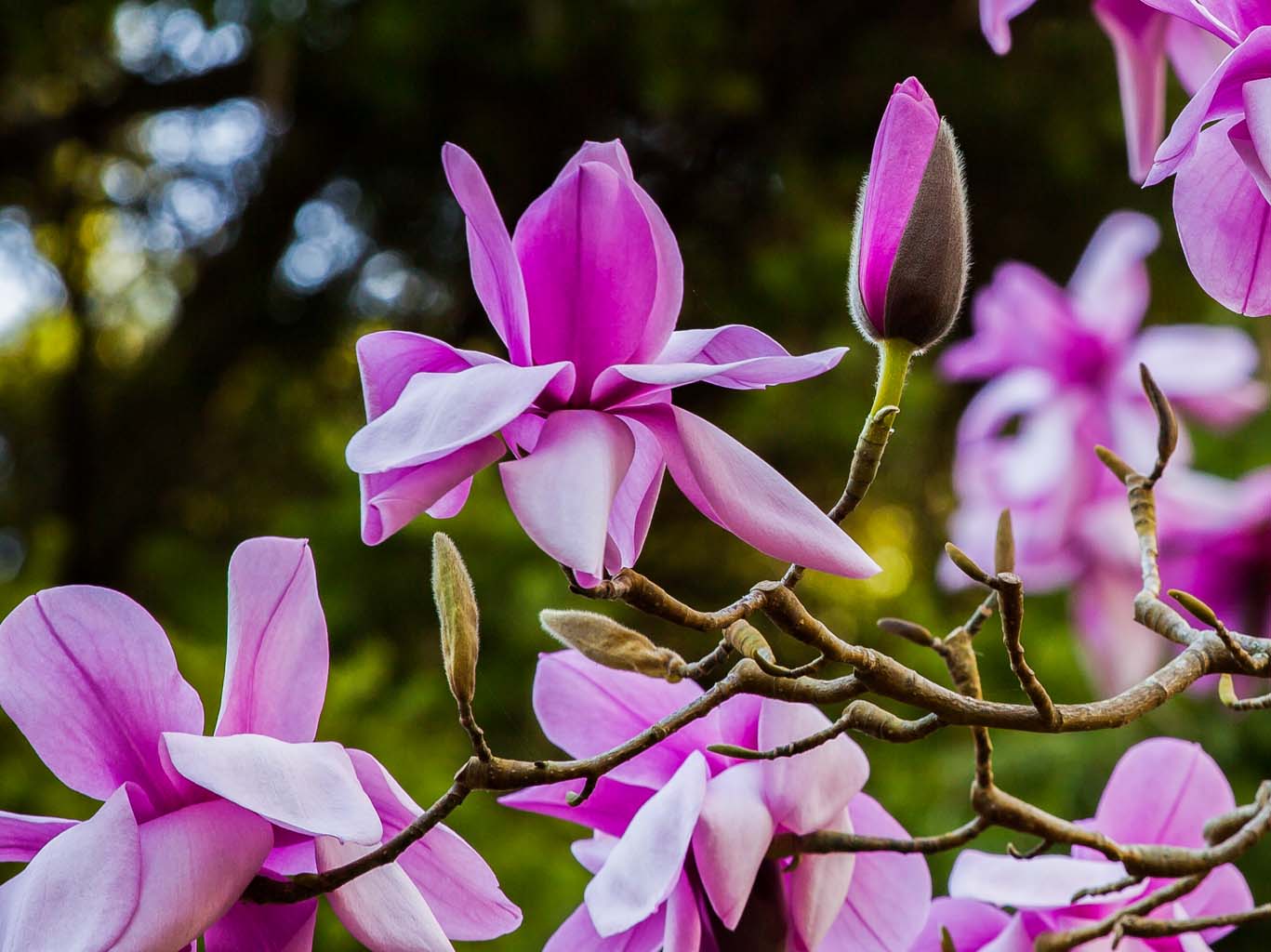They’re back: Two hundred of the world’s most beautiful flowering trees are beginning to blossom in Golden Gate Park.
Yes, it is time for “Magnificent Magnolias” at the San Francisco Botanical Garden (SFBG). Massive pink, white and magenta flowers are opening now on the garden’s trees, one of the country’s most significant collections.
“We are in the early days of what is looking to be a wonderful season,” says Brendan Lange, director of marketing and communications for the Gardens of Golden Gate Park.
Native to the Himalayas and the cloud forests of the Americas, magnolias do well in the city’s foggy, cool air. The SFBG made horticulture history in 1940 by becoming the first garden to bloom a cup-and-saucer magnolia in the U.S.
Magnolias lose their leaves in winter and then burst with flowers before new leaves appear in spring. Luckily, this month’s storms did not cause them damage.
“Gratefully, the storms’ timing was before the magnolias were in bloom,” says Lange. “The magnolia trees themselves weathered the storms quite well, and there were no other major tree failures that damaged any of the magnolia trees, so thus far things are looking good!”
The first big wave of blooms is on tap for this weekend and “peak bloom” typically arrives in early- to mid-February.
A check of the SFBG Instagram account gives the current status of the trees. On Tuesday, there were “more and more flowers” near the Great Meadow and in the camellia and rhododendron gardens but reported “more buds than flowers” and “much more to come!”
It’s good to make plans to see the trees now. Admission to the SFBG and its “Magnificent Magnolias” is available via walk-ins and advanced reservation, but SF residents get in free and everyone is free between 7:30 and 9 a.m. Admission for non-SF adults is $10. Plan to bring a picnic and sprawl out in the Giant Meadow after your stroll.
A handy map guides visitors through the many paths to find a wide variety of magnolias. Check out the photos below for a preview of some of the more interesting magnolias on view this month.
